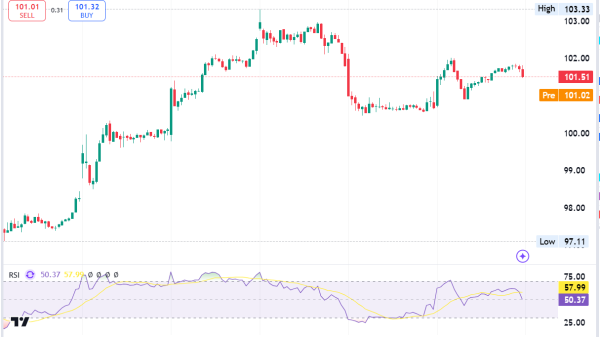It is very easy to over-interpret political events. At the risk of going too far in the other direction, we can summarize the 2020 presidential election succinctly: It was a measure of how Americans felt about Donald Trump. Many Republicans and independents loved him and wanted him to have a second term in office. Many Democrats and independents hated him and didn’t. The latter group cast the most votes.
This year is shaping up to feature the same dynamic. Polling earlier this month indicated that the intent to vote for Trump is driven heavily by support for him, while the intent to vote for President Biden is driven heavily by … opposition to Trump.
In other words, Biden’s chances against Trump (assuming a 2020 rematch, which seems very probable) are likely to depend heavily on how Americans feel about Trump. Not great news for the president, given that, particularly in recent months, polling shows that Americans feel much less hostile to the man who preceded him.
YouGov and its partner The Economist have asked Americans how they feel about Trump for years now. The polling firm provided The Washington Post with monthly averages of views of Trump from his first month in office, to see how those views have shifted over time.
The month during which Trump had the highest unfavorable ratings (measured as the combination of “very” and “somewhat” unfavorable opinions) was not during his presidency. Instead, it came in July 2023, amid the indictments that were obtained against Trump last year.
That month marked the high point in unfavorability among Democrats and independents, too. But among Republicans, the high point came in December 2022 — after the 2022 midterms and as Trump was being blamed for his party’s poor performance in Senate races.
The post-presidency blip seen in 2023 among Democrats and Black Americans has so far been just that: a blip. If we overlay the average unfavorability that Trump saw during his presidency with the trend that extends through this month, we see that Democrats and Black Americans now view Trump less unfavorably than they did when he was president. Republicans and independents view him more unfavorably.
It’s also very important to note that views of Trump shifted before the January 2021 mark — that is, during the 2020 election year. This probably in part reflected how tumultuous that year was. But it was certainly also in part a hardening of opinion as Trump was seeking a second term in office.
Most of the negative views of Trump fall into the “very unfavorable” category. That is, it’s not just that most Americans say they view him unfavorably (though the percentage is under 50 percent for the first time since January 2017). It’s that most of those who view him unfavorably view him very unfavorably. If we overlay the “very unfavorable” percentage on our charts, you can see how that holds true in nearly every group.
There are some important considerations to draw from that data, though. The first is that the percentage of Americans who view Trump very unfavorably is lower than it had been since early in his presidency. The second is that, among Democrats, it is six percentage points lower than it was on average from 2017 through 2020.
It’s hard to see on the chart above, but there’s other good news for Trump. Among Republicans who view Trump unfavorably, the percentage that view him very unfavorably is down since he left office. In other words, Republicans who don’t like Trump feel less strongly about him than they used to. This is how opinions generally change; it’s not a flip from dislike to like but, instead, from dislike to dislike less.
The emerging presidential race is likely to reshape these numbers, seeing Trump’s unfavorability increase over the next nine months. In 2020, though, those changes were modest: an increase of one point overall and about four points among Democrats. If we assume the same increase in unfavorability from now to November that was seen four years ago, fewer Democrats will have unfavorable views of Trump than did on average from 2017 to 2020 (by nearly three points), and negative views of Trump among Democrats will be nearly 10 points lower than they were in 2020.
The good news for Biden is those numbers for independents, which are about where they were in November 2020. That polling from earlier this month showing that views of the election were still framed around views of Trump? The group most likely to say their pro-Biden vote was really an anti-Trump one were political independents.


































